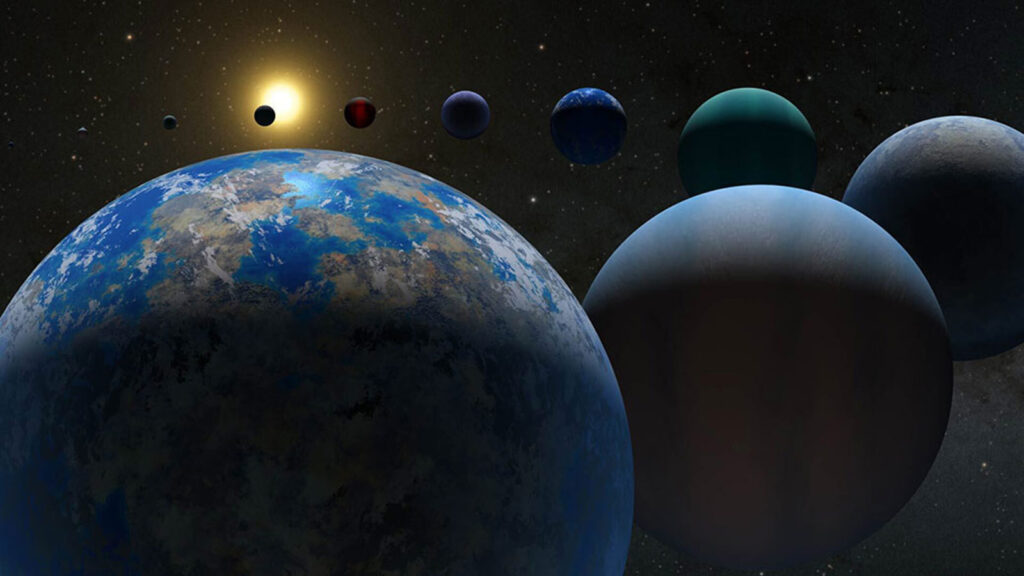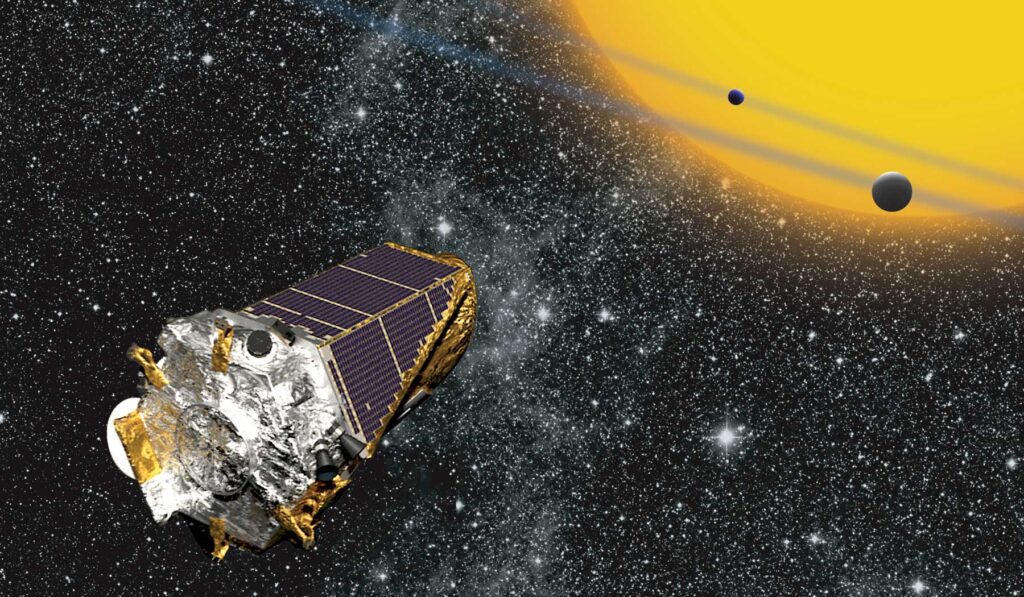For centuries, humanity has gazed at the stars and wondered if we are alone in the universe. The discovery of exoplanets—planets orbiting stars outside our solar system—has transformed that age-old question into a scientific quest. In the last three decades, advancements in technology and astronomy have brought us closer than ever to identifying an “Earth 2.0,” a planet with conditions suitable for life as we know it. But how close are we, really, to finding another Earth? Let’s delve into the science, the tools, and the challenges behind this search.
What Are Exoplanets?

Exoplanets are planets that exist beyond our solar system, orbiting stars other than our Sun. Since the first confirmed discovery of an exoplanet in 1992, astronomers have identified over 5,000 exoplanets, each with unique characteristics. These planets vary widely in size, composition, and orbital distance from their host stars. The ultimate goal is to find Earth-like planets—rocky planets in a star’s habitable zone, where liquid water could potentially exist.
Key Categories of Exoplanets
- Gas Giants: Similar to Jupiter and Saturn, these massive planets are primarily composed of hydrogen and helium.
- Super-Earths: Planets larger than Earth but smaller than Neptune, which may have rocky surfaces or thick atmospheres.
- Ice Giants: Similar to Uranus and Neptune, these planets have icy compositions with volatile elements like water, ammonia, and methane.
- Terrestrial Planets: Rocky worlds like Earth, Venus, and Mars, often the primary targets in the search for Earth 2.0.
Methods of Detecting Exoplanets
The discovery of exoplanets relies on indirect methods because these distant worlds are too faint to observe directly with current technology. Here are the most effective techniques used by astronomers:
1. Transit Method
The transit method detects exoplanets by observing the periodic dimming of a star’s light when a planet passes in front of it. This technique has been incredibly successful, accounting for the majority of exoplanet discoveries.
- Advantages: Provides data on the planet’s size, orbital period, and atmospheric composition (via spectroscopy).
- Limitations: Requires the planet’s orbit to align with our line of sight, limiting the number of detectable planets.
2. Radial Velocity Method
Also known as the “wobble method,” this approach measures the slight shifts in a star’s spectrum caused by the gravitational pull of an orbiting planet.
- Advantages: Effective for detecting planets with large masses close to their stars.
- Limitations: Less sensitive to smaller, Earth-like planets farther from their stars.
3. Direct Imaging
This method involves capturing actual images of exoplanets by blocking out the star’s light using specialized instruments.
- Advantages: Allows for the study of planetary atmospheres and surface conditions.
- Limitations: Best suited for large planets far from their host stars.
4. Microlensing
Microlensing occurs when a massive object passes in front of a distant star, bending its light and briefly magnifying it. The presence of a planet can cause additional magnification.
- Advantages: Can detect planets at great distances, including free-floating planets.
- Limitations: Rare events and lack of repeatability make follow-up studies challenging.
Tools and Missions Advancing the Search

1. Kepler Space Telescope
Launched in 2009, Kepler revolutionized the field of exoplanet discovery. Over its nine-year mission, Kepler identified thousands of exoplanets using the transit method.
2. Transiting Exoplanet Survey Satellite (TESS)
TESS, launched in 2018, continues the work of Kepler by focusing on brighter, nearby stars. Its mission aims to discover smaller, Earth-like planets suitable for follow-up studies.
3. James Webb Space Telescope (JWST)
The JWST, launched in 2021, has become a game-changer in exoplanet research. With its advanced infrared capabilities, JWST can analyze the atmospheres of distant planets, searching for signs of habitability or even biosignatures.
4. Upcoming Missions
- European Space Agency’s PLATO: Scheduled for launch in 2026, PLATO will focus on Earth-sized planets in habitable zones.
- LUVOIR and HabEx: Proposed next-generation telescopes designed to directly image Earth-like exoplanets and study their atmospheres.
The Habitable Zone: A Key Criterion
The “habitable zone” (HZ), often called the “Goldilocks zone,” is the region around a star where conditions might be just right for liquid water to exist. The location of this zone depends on the star’s size and temperature. However, habitability is not guaranteed by being in the HZ; other factors like atmosphere, magnetic fields, and geological activity also play crucial roles.
Factors Influencing Habitability
- Atmosphere: A stable atmosphere regulates temperature and protects against harmful radiation.
- Magnetic Field: Shields the planet from solar winds that could strip away the atmosphere.
- Geological Activity: Plate tectonics and volcanic activity recycle essential elements and maintain a stable climate.
- Star Type: Long-lived, stable stars like our Sun provide a better chance for life to develop compared to short-lived, volatile stars.
Challenges in Finding Earth 2.0
- Distance: Most exoplanets are light-years away, making direct observation and study difficult.
- Small Planet Detection: Earth-sized planets are harder to detect due to their size and mass.
- Atmospheric Analysis: Identifying the chemical composition of exoplanet atmospheres requires extremely sensitive instruments.
- Biosignature Ambiguity: Compounds like oxygen or methane could indicate life but can also result from non-biological processes.
Have We Found Any Earth-like Planets Yet?
Several promising candidates have emerged in recent years:
- Kepler-452b: Often called “Earth’s cousin,” this planet lies in the habitable zone of a Sun-like star but is 60% larger than Earth.
- Proxima Centauri b: Orbiting the closest star to our Sun, this planet is within its star’s habitable zone but may face challenges from stellar flares.
- TRAPPIST-1 System: This system contains seven Earth-sized planets, three of which lie in the habitable zone of their ultra-cool dwarf star.
- LHS 1140b: A rocky planet in the habitable zone, it’s an excellent candidate for atmospheric studies.
The Role of Artificial Intelligence in Exoplanet Research
AI and machine learning have become invaluable tools in the search for exoplanets. Algorithms analyze vast datasets from telescopes, identifying patterns and potential planets that might otherwise be overlooked. AI has accelerated the discovery process and improved the accuracy of planet detection.
What Would Earth 2.0 Look Like?
An “Earth 2.0” would likely have the following characteristics:
- Size: Similar to Earth, ensuring comparable gravity.
- Atmosphere: Rich in oxygen, nitrogen, and other gases essential for life.
- Liquid Water: The presence of oceans, rivers, or lakes.
- Stable Climate: Moderate temperatures suitable for sustaining diverse ecosystems.
Why Finding Earth 2.0 Matters
- Understanding Life’s Origins: Studying exoplanets can provide insights into how life emerges and evolves.
- Future Exploration: Identifying potentially habitable planets sets the stage for future interstellar missions.
- Planetary Preservation: Discovering Earth-like planets emphasizes the uniqueness of our own world, inspiring efforts to protect it.
Conclusion: Are We Close to Finding Earth 2.0?
While we have yet to find a definitive Earth 2.0, advancements in technology, innovative missions, and relentless curiosity are bringing us closer each year. The discovery of even a single Earth-like planet would profoundly impact our understanding of the universe and our place within it. As telescopes become more powerful and our methods more refined, the dream of finding another Earth may soon become a reality. Until then, the search continues, fueled by the hope that we are not alone.



